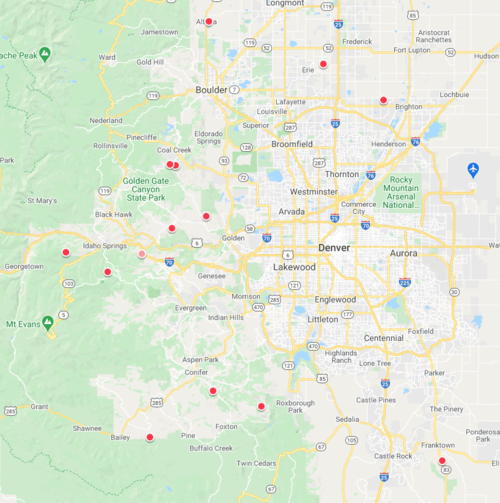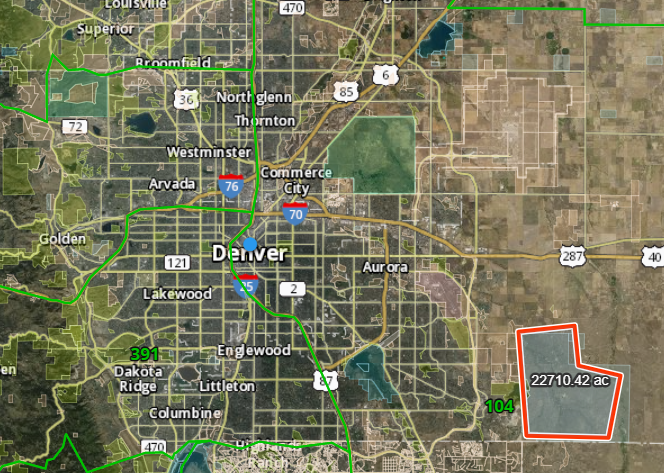El Jason
Well-known member
Lack of municipal and county planning, and lack of forethought by people moving there is in no way sufficient justification for opening wilderness areas to bikes.
Follow along with the video below to see how to install our site as a web app on your home screen.
Note: This feature may not be available in some browsers.
I was actually going to mention the Adaks as a good example of wiser use. Esp for how close they are to so many users.The split between wilderness and wild forest is fairly even in the Adirondacks.
I think it's a fair bit more complicated than that...Lack of municipal and county planning, and lack of forethought by people moving there is in no way sufficient justification for opening wilderness areas to bikes.
I'm sure it is.I think it's a fair bit more complicated than that...
Isn't this exactly what I was speaking to though?Perhaps opening up specific wilderness areas on the front range to a wider variety of uses would help alleviate pressure on the western slope. Folks aren't going to car camp to bike if they don't have to...
Any cyclist pushing for this needs to think about how they'd feel if the non-motorized areas they ride were opened up to UTVs and dirt bikes.
It also makes me think about all the 4-wheelers and dirt bikers in Moab that had so many of their spots inundated with mtb over the past 40 years
Perhaps opening up specific wilderness areas on the front range to a wider variety of uses would help alleviate pressure on the western slope.

So I live in an area where the foothills are protected from development, mostly through community non-profit private lands purchases in the 1980's and 1990's. The conservation of those lands at a time when it was I'm sure not comfortable or convenient, now allows for amazing recreation close to town. Those lands are truly the crown jewel of our little valley.I agree, but to think of the Bob as indicative of all wilderness is myopic.
Take the I-70 corridor, Denver has very limited req opportunities. Honestly one of the biggest plus of coming to Boston, tons of single track from the house... no crowds. Partially this is due to a fraction of the user group + and partially every single town has it's own green space, and a lot trail systems. Aurora, no dirt within 45 mins, (highline canal.. haha). Basically everyone is funned into evergreen/conifer for close access or up and down I-25 or I-70. Traffic is a mother all summer and winter.
So wilderness issue, you head up into the mts and you got the Mt.Evans, James Peak, Vasquez, Ptarmigan, Eagle's Nest, Lost creek, Indian peaks, RMNP, Comanche Peaks, and Rawah. A huge portion of CO's wilderness is essentially on the outskirts of the city, you want to bike without crowds you are driving a long ways. You aren't doing a there and back 5 hours 1 way, so more people camping, more people shitting in the woods, etc.
People move to CO specifically because of the rec opportunities, this problem is only going to get worse.
Perhaps opening up specific wilderness areas on the front range to a wider variety of uses would help alleviate pressure on the western slope. Folks aren't going to car camp to bike if they don't have to...
I mean bikes in Eagle's nest... there is a double track road that run's through a lot of it with big metal gates from before it was designated, portions of it are within a couple hundred feet of peoples houses. It's big 'W' wilderness but certainly not wilderness in the way the Bob is wilderness.

"Lack of municipal and county planning, and lack of forethought by people moving there is in no way sufficient justification for opening wilderness areas to bikes."I'm sure it is.
Isn't this exactly what I was speaking to though?
So I live in an area where the foothills are protected from development, mostly through community non-profit private lands purchases in the 1980's and 1990's. The conservation of those lands at a time when it was I'm sure not comfortable or convenient, now allows for amazing recreation close to town. Those lands are truly the crown jewel of our little valley.
Instead of pushing for bikes in the wilderness the mt biking community could do something a little more uncomfortable, and actually start conserving property. Bit by bit, and little by little over the next decade or two, they could easily create their own space.
Current large parcels for sale near Denver.
View attachment 168913

That's still the easy out; that option will always (generally) be there. Conserving the foothills may not. And will only become harder and harder in the future.This one would be a pen stroke... there's another 300,000 near CO springs as well.
View attachment 168915
100% agree, great points and valid concerns in my book.I almost think there is an aspect of, "If you build it they will come", when it comes to mountain bikers.
It would be a difficult study to set up and have it apply to different geographies, but I would like to see evidence that opening up new trails to mtn bikers decreases use on historic ones within similar geographies. It's not the sense I get around here.
This one would be a pen stroke... there's another 300,000 near CO springs as well.
View attachment 168915
Which you can't hunt... because it's close to the public.NO! There’s so many pronghorn out there
Which you can't hunt... because it's close to the public.
With that compromising logic we should just disband the Wilderness Act now. Doesn't matter what it meant at the time, scrap it, my selfish needs now are more important. That's what I hear you saying."Lack of municipal and county planning, and lack of forethought by people moving there is in no way sufficient justification for opening wilderness areas to bikes."
So when I say more complicated, I'm thinking about the inevitable behavior of humans.
You can't bike here, here being close to home, doesn't even kinda mean people will stop biking.
What happens in dry counties, states where they ban fireworks? Basically the closest places that you can do those things/buy those have a ridiculous amount of that activity occurring.
In my mind this is similar to the rock cairn thing, people are gonna go if you don't make a trail they are just going to walk up the mountain however they want and there will be a million trails.
In my mind this is a how do we protect the most landscape, the I-70 corridor/front range problem is having effects all over.
I dk maybe we think about shifting wilderness around, remove the designation from some areas or shrink them... expand others?
Personally I'd absolutely sacrifice the Mt. Evans wilderness, if you could cut traffic to the western slope/Moab by 1/2 to 1/3 during the summer months. Hell I'd put a ski area in and cut down on the winter travel. Bring back the hidden valley permit for rocky mountain.
I don't have the right answer but I think 1950s thinking and resource planning doesn't fit well with 2020s use patterns.
I'm thinking of the conversation of how to we control the dispersion of humans on the landscape.With that compromising logic we should just disband the Wilderness Act now. Doesn't matter what it meant at the time, scrap it, my selfish needs now are more important. That's what I hear you saying.